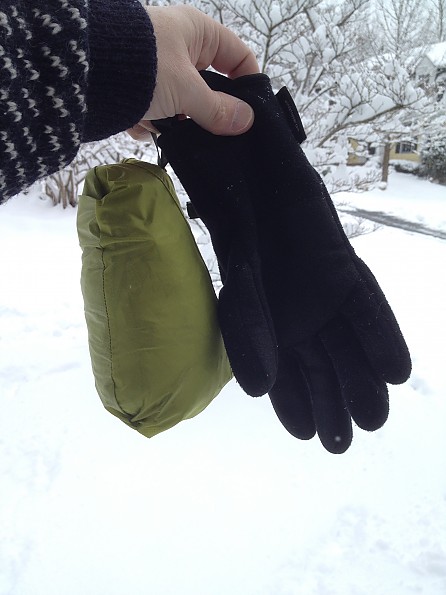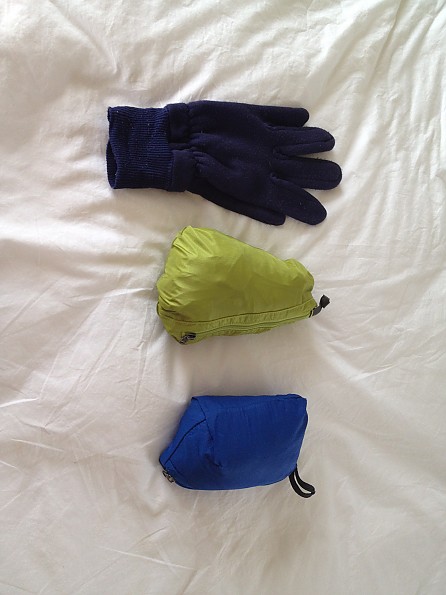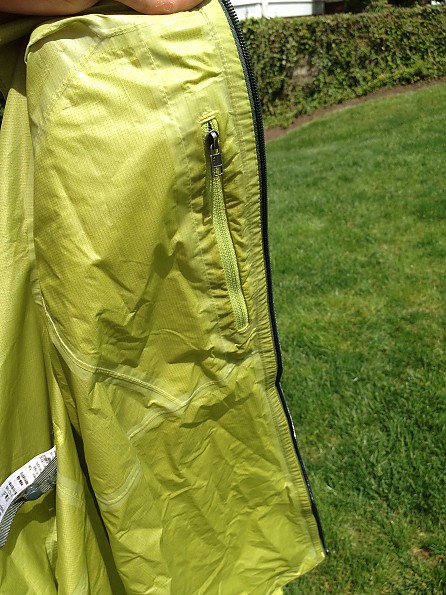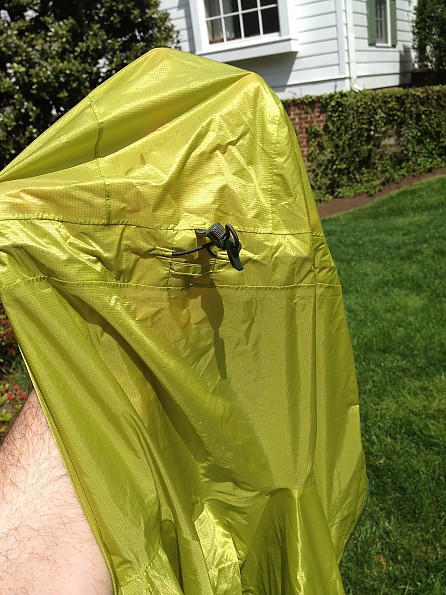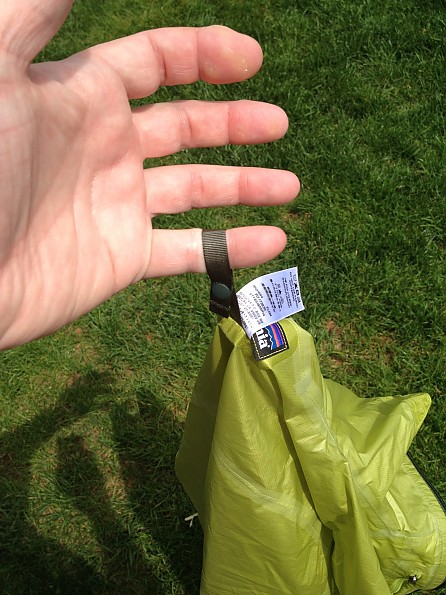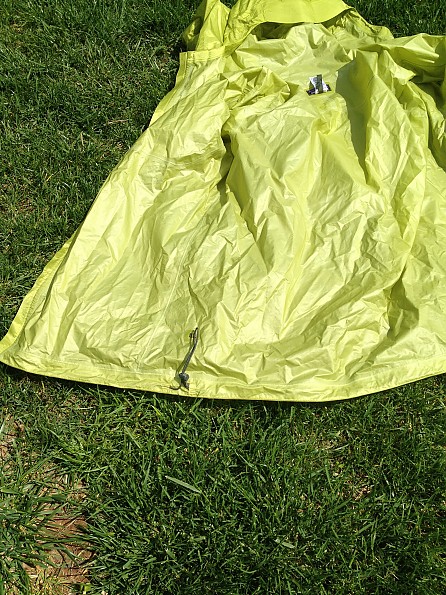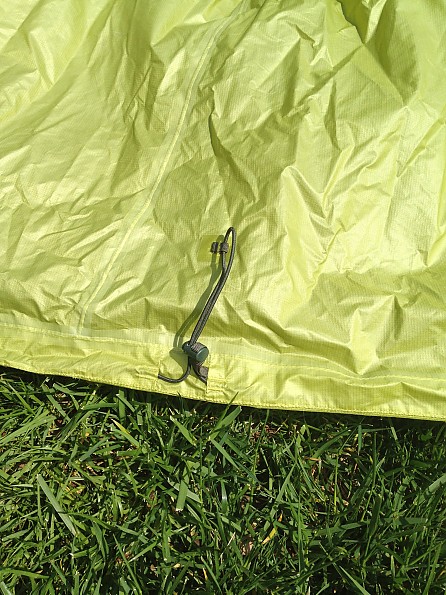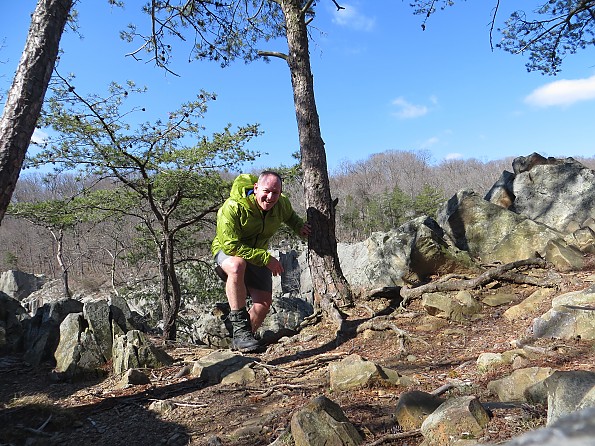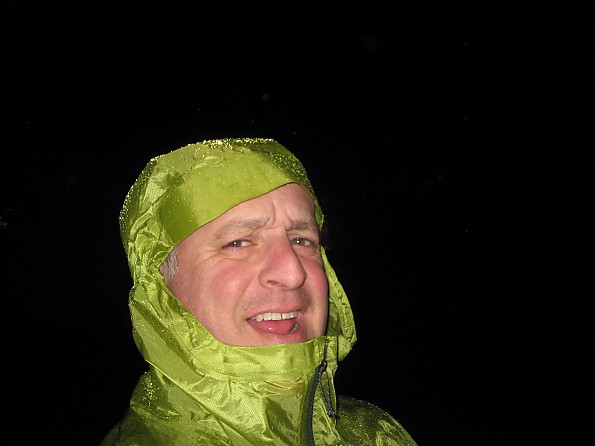Patagonia Alpine Houdini
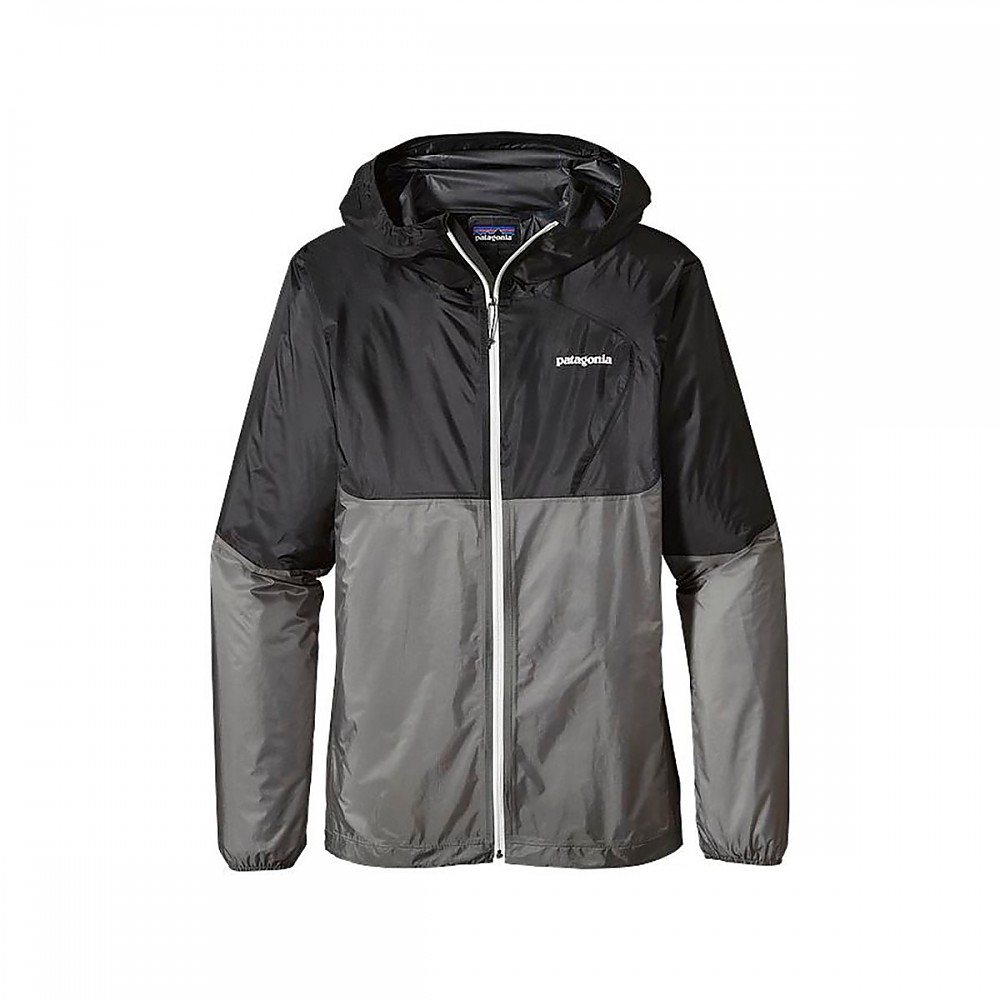
This is the lightest and most packable waterproof/breathable shell I have tried. It functioned extremely well on a variety of really unpleasant days, in both heavy rain and high wind. Consistent with many ultralight options, this jacket covers the basics but has a fairly spartan design overall — so if you favor function over frills, you will like this.
I highly recommend this shell as a compact, light, but very functional insurance policy against foul weather.
Pros
- Lightweight
- Athletic fit but room for some layering
- Waterproof and breathable
- Great wind protection
- Spartan design
Cons
- Not inexpensive
- Spartan design may not thrill some people
- lLght fabric may be prone to wear and tear
PRODUCT DETAILS:
My size XL in "folios green" weighed in at 6.4 ounces on a digital hand scale. That is a little heavier than the regular Houdini, which is 4 ounces in the same size. It has one very small interior pocket, adjacent to the zipper on the chest. The pocket can carry small stuff, like a few energy bars, and it can be turned inside out and stuffed with the jacket.
In the photo below, I stuffed the jacket into the pocket and held it up against a windblock fleece glove. Yes, this is very, very compact. The jacket retails for $199, which is fairly expensive for something so light.
To highlight the point that this isn't much jacket to carry around, I compared it to a regular (blue) Patagonia Houdini, also stuffed into its own pocket, and a Patagonia Capilene liner glove. Note the Houdini has a nylon loop, suitable for latching it to your pack with a carabiner if needed.
The full-zip front is a typical coil zipper, light but not ridiculously so, and it zipped and unzipped easily — not a "sticky" zipper. The main zipper has a very small piece of nylon string as the 'pull' and is backed by a rain/draft flap. The jacket has no other way to ventilate — no armpit zips, for example.
The hood has an elastic across the back and a single spring toggle, which means less adjustability than some options, but also less weight. The brim is a somewhat stiffer material. I will address the hood in more detail below, because it has some slight limitations to be aware of.
The hem also has an elastic, adjustable via a single spring toggle on one side. The wrists are elastic but not adjustable. The jacket is fully seam-taped on the inside. Unsurprisingly for a jacket that claims to be waterproof and breathable, the nylon has little if any stretchiness to it, it is very light but basically a hard shell.
This shows the small pocket inside the jacket, in the chest area.
The hardwear at the center is the only adjustment for the hood.
If you want to hang the jacket to dry it out, it has a nice unsnap-able loop on the inside.
These two photos show the location and closer details for the hem adjustment. It's only on one side, which functioned perfectly well.
WHEN YOU WEAR IT, HOW DOES IT FIT?
I found the size XL fit me well. It has a relatively lean fit on the torso, with enough room to accommodate a thick base layer or a medium insulating layer. I felt confined trying to layer it over a 300 weight polar fleece jacket, though.
At the same time, there isn't much spare fabric here, and I would characterize the fit as quasi-athletic. Still, it has a little more room for layering than the regular Houdini. (For comparison's sake, I wear a size 46 regular men's jacket and usually fit in size XL, so I consider this to be true to size).
Some things about the fit account for the "alpine" label. The sleeves are just a little longer than normal, and the hem falls around mid-upper thigh for me, which is a few inches longer than the regular Houdini. The limited elastic pulls on the hem and hood are fine and allow you to batten down the hatches if the wind and rain are flying.
A few words about the hood. It provides full coverage and has plenty of room. It fit over doubled winter hats and would probably handle a helmet if it's low profile. The stiffened brim does a very good job keeping rain off yoru face.
However, The limited adjustability and design of the brim forced me to pull the elastic pretty tight, because otherwise, the brim tended to block my view a little bit from the top. Wearing a ballcap would take care of that.
By contrast, lateral visibility is great. I have used a number of higher-end jackets that have a hood with better overall design and better ability to make adjustments. Those jackets don't weigh 6 ounces, though, and they cost a lot more than this.
FIELD TESTING CONDITIONS
I used the Alpine Houdini for a couple of months. Most of those walks were with a daypack or backpack on. Because the Mid-Atlantic featured some of the worst late winter/early spring weather we have seen in years, I had opportunities to wear this jacket in abnormally lousy weather.
I wore the jacket on a hike while a front moved through with 40-50 mile per hour winds, saw temperatures from the high 20s to the low 60s, and hiked in steady snow, hail, misty rain, and a few truly monsoon-like days. A few days ago, I spent a few hours out on a day where our rainfall hit 5.8 inches for the day. On one truly raw Sunday morning, the temperature started in the low 40s and dropped into the mid-30s by noon, all accompanied by drenching rain that turned to sleet.
More typically, I used the jacket a number of times on breezy mornings with light rain or mist.
I spent the time on urban walks and local trails but did not have an opportunity to see any serious off-trail situations and very little rock-scrambling.
These were taken on one of my favorite local trails, a pretty cold and windy early-spring morning.
I took this not long after I left the house because the heavy rain probably would have killed my iPhone otherwise.
OBSERVATIONS ABOUT HOW THIS JACKET PERFORMS:
I. 'Breathability:'
I define this as the ability to let perspiration in vapor form escape from the inside. On steady uphill hikes, where I was sweating pretty hard, I felt damp inside the jacket, I could feel some moisture on the interior surface, and my base layer was damp. This happens no matter what kind of waterproof/breathable solution I try.
Notably, while moisture beaded up on the seam tape, it did not on the rest of the interior. I'm confident it let some moisture out. In my opinion, it doesn't allow as much moisture to escape as the best high-end products like Gore tex, eVent, and Neoshell. However, it works at least as well as most polyurethane-coated jackets. I think it is comparable, in this regard, to the Mountain Hardwear Plasmic Jacket I previously tested for the Review Corps.
II. Waterproofness:
Absolutely. The rain stays out, period, and I walked in some of the hardest rain I have seen in years. Water beads up nicely, so this has a very good water repellant treatment. The hood adjustment allowed me to cinch it down, keep the rain out, yet have pretty good visibility (noting my reservation about the brim occasionally dropping down too far).
With a nylon shell this lightweight, a long day in drenching rain will invariably end up making the jacket feel soaked and clingy. That was true with this jacket. However, it did not 'wet out' or soak through. Because it is so light, it dries quickly once you get out from the rain and hang it.
III. Wind Protection:
The waterproof/breathable fabric makes this jacket a much better solution for high winds than jackets that lack a coating or a membrane. In this respect, the Alpine Houdini is an altogether different and more useful companion in lousy weather than the regular Houdini. I have experienced some flash thunderstorms that left my regular Houdini limp and soaked through. That won't happen with this one.
IV. Wear and Tear:
I do not think it is very fair or helpful to draw serious conclusions about this from a few months of regular use. What I can say is that the areas under the backpack shoulder straps and hip belt had no visible wear, nor did I experience any failure in the seams, seam tape, fabric, or zippers. So far, it appears to be well-made. For obvious reasons, I would not choose a rain shell this light for bushwhacking.
SUMMARY AND CONCLUSIONS
I wish that I had some photos of what I looked like after some of the more rugged hikes with this jacket. Though I probably looked half-drowned, and my Gore tex trail runners were squelching with rain, I was happy about the way this jacket worked.
As a jacket that takes a no-frills approach, limited features meaning lighter weight, it should serve as an excellent lightweight three-season wind and rain shell — probably the best lightweight shell of its kind that I have used.
I didn't test it in winter conditions, but I think it would be outstanding as a lightweight barrier when the heavier shells might be more jacket than you need. Overall, it's a keeper.
I appreciated the opportunity to test this for the Review Corps.
Source: received for testing via the Trailspace Review Corps
(Sample provided by Patagonia for testing and review)
Pros
- Cuts wind
- Waterproof
- Super light
- Packable
Cons
- No elastic to tighten around the face
Hello, backpackers. I fully agree with the last review. I would just add one important thing:
I bought it and was very satisfied and with the nice light blue color too. However I noticed that when tightening the back hood elastic it is OK on the top of the head, but the cheeks and chin are widely open to the rain that comes in.
There are no elastics going up to the zip that tightens around the face. That's why I give 3.5 stars.
Source: bought it new
Price Paid: $199
Your Review
Where to Buy
You May Like
Specs
| Men's | |
|---|---|
| Price |
MSRP: $199.00 Historic Range: $90.99-$199.00 Reviewers Paid: $199.00 |
| Weight |
187 g / 6.6 oz |
| Women's | |
|---|---|
| Price |
Historic Range: $98.73-$199.00 |


